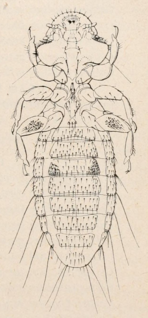 W
WActornithophilus is a genus of louse in the family Amblycera. It was circumscribed by Gordon Floyd Ferris in 1916. Its species are ectoparasites of birds in the order Charadriiformes.
 W
WCephenemyiini is a tribe within the family Oestridae which includes large flies, parasitic on deer and related ungulates.Tribe Cephenemyiini Genus Cephenemyia Latreille, 1818C. apicata Bennett and Sabrosky, 1962 C. auribarbis (Meigen, 1824) C. grandis C. jellisoni Townsend, 1941 C. kaplanovi C. macrostis Brauer, 1863 C. phobifer (Clark, 1815) C. pratti (Clark, 1815) C. stimulator Hunter, 1916 C. trompe (Modeer, 1786) C. ulrichii Brauer, 1863Genus Pharyngomyia Schiner, 1861P. picta (Meigen, 1824)
 W
WCordylobia is a genus of flies from the family Calliphoridae. The larvae of Cordylobia are parasitic on mammals, especially rodents. Two species, C. anthropophaga and C. rodhaini, also are known as parasites of humans. The adult flies feed on rotting fruits, vegetables, and animal faeces, and are most abundant in the wet season. Like many tropical insects, they are most active in the morning and evening. Cordylobia species are largely confined to Africa, though they have been recorded elsewhere when transported by human travellers.
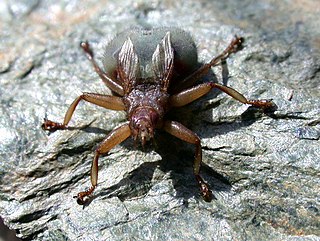 W
WCrataerina is a genus of louse flies in the family Hippoboscidae. All are parasites of birds, feeding on the blood of various species of Apodidae (swifts) and Hirundinidae. The genus is sometimes spelled Craterina.
 W
WCrataerina pallida, the swift lousefly, is a species of biting fly in the family of louse flies Hippoboscidae. These flies are commonly encountered in the nests of the common swift in Europe and Asia.
 W
WThe Cuterebrinae, the robust bot flies, are a subfamily of Oestridae which includes large, parasitic flies; this group has historically been treated as a family, but all recent classifications place them firmly within the Oestridae. Both genera spend their larval stages in the skin of mammals. The genus Cuterebra, or rodent bots, attack rodents and similar animals. The other genus, Dermatobia, attacks primates, including humans.
 W
WFahrenholzia pinnata is a species of louse. Its typical host is a rodent.
 W
WThe Gasterophilinae are a subfamily of Oestridae which includes large, parasitic flies; this group has historically been treated as a family, but all recent classifications place them firmly within the Oestridae. Many members of this subfamily spend part of their larval stages in the digestive tracts of herbivores. The best known genus is Gasterophilus, which attacks horses, deer, and similar animals. The genus Cobboldia breeds in elephants. The genus Gyrostigma breeds in rhinoceroses.
 W
WGasterophilus haemorrhoidalis is a species of the genus Gasterophilus that lays eggs on the lips and around the mouth of horses, mules and donkeys.
 W
WThe genus Haematomyzus includes three species of lice that differ so markedly from all other lice that they have been placed in a suborder of their own. These unusual lice are ectoparasites of elephants and warthogs. Their mouthparts are elongated to form a drill-like structure that allows them to penetrate the thick skin of their host.
 W
WHarrisoniella hopkinsi is a species of phtilopterid louse that lives on and eats the feathers of albatrosses. The species was first described by W. Eichler in 1952.
 W
WHippobosca is a genus of flies in the family Hippoboscidae. There are seven known species. There are numerous synonyms.
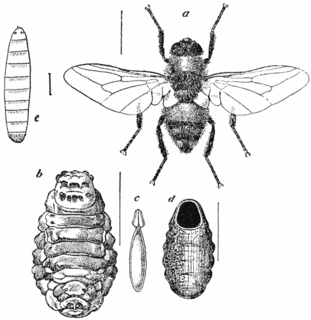 W
WThe Hypodermatinae are a subfamily of Oestridae. The Hypodermatinae include large parasitic flies, some of which are known as warble flies. The 9 genera in this subfamily typically spend their larval stages in the skin or soft tissues of mammals, including bovines. Such species include serious pests of livestock.
 W
WIcosta are genus of biting flies in the family of louse flies, Hippoboscidae. There are 52 known species, making it the largest Hippoboscid genus. All species are parasites of birds.
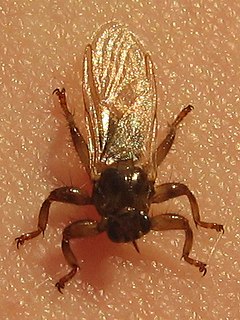 W
WLipoptena is a genus of Hippoboscidae, known as louse flies or keds.
 W
WLipopteninae is a subfamily of the fly family Hippoboscidae. All are parasitic.
 W
WLusius is a genus of parasitoid wasps in the tribe Phaeogenini Förster, 1869 or Alomyini Förster, 1869, first described by Pierre Jules Tosquinet in 1903, published after his death. The genus is similar in appearance to species in the genus Heterischnus. Lusius occurs in the Oriental, Afrotropical, Neotropical and Australasian biogeographical regions.
 W
WMelophagus is a genus of biting flies in the family of louse flies, Hippoboscidae. There are three known species and one subspecies. All are parasites of bovids. All are wingless.
 W
WMenacanthus is a genus of chewing lice which parasitise birds. The taxonomy of this genus is highly uncertain. Most taxonomies have given this genus as having over a hundred species, but recent studies have synonymised dozens of species and found other names to be invalid. Some Menacanthus species remain to be discovered, or are synonymised in error. Menacanthus lice feed on the blood of a wide variety of birds, including chickens, by piercing the quills of feathers and gnawing the epidermis. In doing so, they can spread disease and lower egg production. In Menacanthus stramineus, eggs are incubated for four or five days, each of the three nymphal stages lasts for about three days, and adult life for about twelve days. Females produce as many as four eggs in a day, averaging 1.6 eggs a day, with egg production peaking 5–6 days after reaching adulthood. On sparrows, Menacanthus lice are particularly common, and are found in many different niches, consuming blood and feathers.
 W
WMeromenopon is a genus of chewing lice which parasitise birds. The species Meromenopon meropsis is a parasite of bee-eaters.
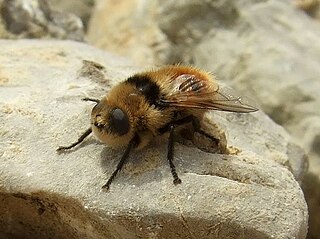 W
WOestrinae is a subfamily of Oestridae which includes parasitic flies attacking a range of different hosts. There are 9 genera with 34 species in this subfamily, which typically spend their larval stage in the skin or soft tissues of mammals, including deer or sheep. The adult flies give birth to living larva in the host's nostril.
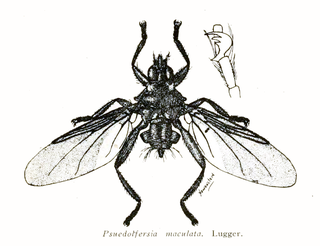 W
WOlfersia is a genus of biting flies in the family of louse flies, Hippoboscidae. The genus was erected by William Elford Leach in 1817. There are seven known species, and all are parasites of birds.
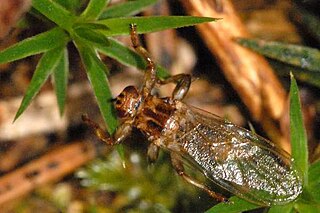 W
WOrnithomya are genus of biting flies in the family of louse flies, Hippoboscidae. There are 29 known species. All species are parasites of birds.
 W
WPedicinus is a genus of sucking louse, the only genus in the family Pedicinidae. Species belonging to this genus are found on Old World monkeys and apes of different kinds. Pedicinus, along with its sister genus Pthirus, are believed to have diverged from their common ancestor approximately 22.5-2.5 million years ago.
 W
WPedicinus hamadryas is a species of sucking louse. Its typical host is the baboon .
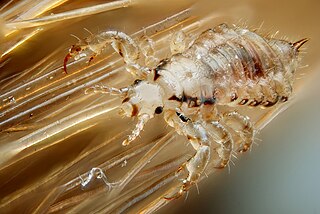 W
WPediculus is a genus of sucking lice, the sole genus in the family Pediculidae. Pediculus species are ectoparasites of primates.
 W
WPediculus humanus is a species of louse that infects humans. It comprises two subspecies:Pediculus humanus humanus Linnaeus, 1758 – the body louse Pediculus humanus capitis De Geer, 1767 – the head louse
 W
WThe Philopteridae are a family of Ischnocera, chewing lice mostly parasitic on birds.
 W
WPseudolynchia are genus of biting flies in the family of louse flies, Hippoboscidae. There are 5 known species. One of the more well known speciec is the pigeon louse fly Pseudolynchia canariensis'. All species are Parasites of birds.
 W
WPseudolynchia canariensis, the pigeon louse fly or pigeon fly, is a species of biting fly in the family of louse flies, Hippoboscidae.
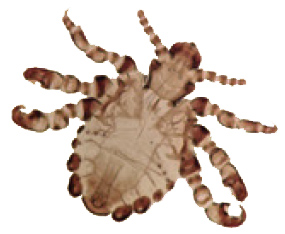 W
WPthirus is a genus of lice. There are only two extant species, and they are the sole known members of the family Pthiridae. Pthirus gorillae infests gorillas, and Pthirus pubis afflicts humans, and is commonly known as the crab louse or pubic louse. The two species diverged some 3.3 million years ago.
 W
WQuadraceps is a genus of louse. They are ectoparasites of birds in the order Charadriiformes, and the genus was circumscribed in 1939 by Theresa Clay and Richard Meinertzhagen.
 W
WThe Ricinidae are a family of a larger group Amblycera of the chewing lice. Most commonly they are ectoparasites of birds. The family includes the genus Ricinus.
 W
WRicinus is a genus of chewing lice which parasitise birds. It is the largest genus of chewing lice found parasitizing Passeriformes.
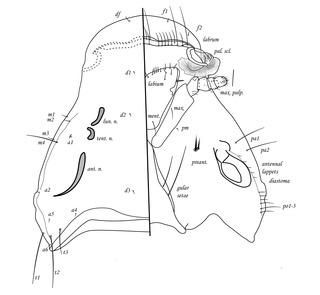 W
WRicinus vaderi is a species of chewing lice which parasitises the calandra lark in Azerbaijan. It is a member of Ricinus, the largest genus of chewing lice found parasitizing Passeriformes.
 W
WStrigiphilus garylarsoni is a species of chewing louse found only on owls. The species has no common name.
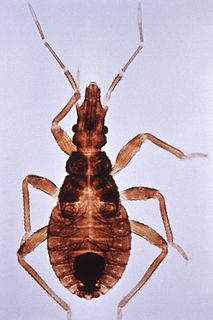 W
WTriatoma infestans, commonly called winchuka (vinchuca) in Argentina, Bolivia and Chile, barbeiro in Brazil, chipo in Venezuela and also known as "kissing bug" or "barber bug" in English, is a blood-sucking bug and the most important vector of Trypanosoma cruzi which can lead to Chagas disease. It is widespread in the Southern Cone countries of South America; in all these countries T. infestans is almost an exclusively domestic species, except in Bolivia where sylvatic forms have been recorded in rock piles in association with wild guinea pigs. This region has joined the control intervention called Southern Cone Initiative managed by the PAHO.
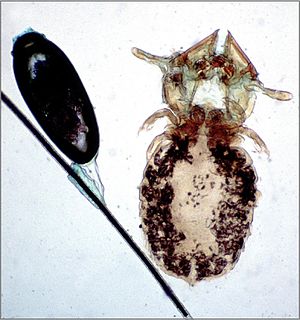 W
WTrichodectidae is a family of louse in the suborder Ischnocera. Its species are parasites of mammals. The following 19 genera are recognized: